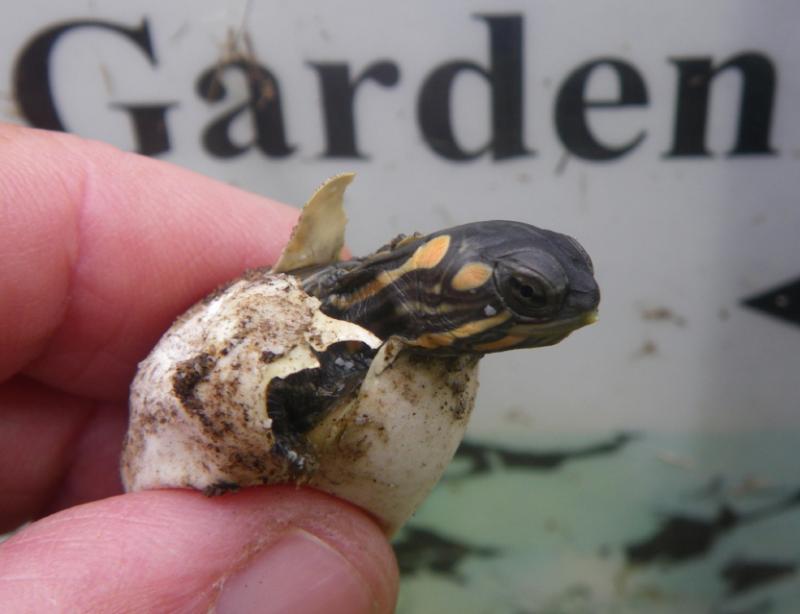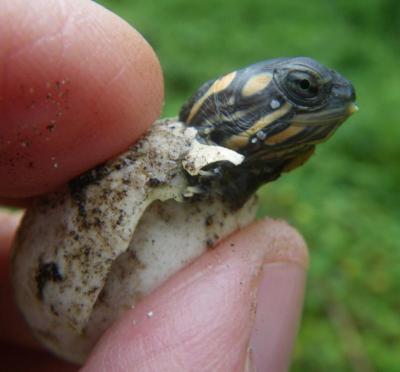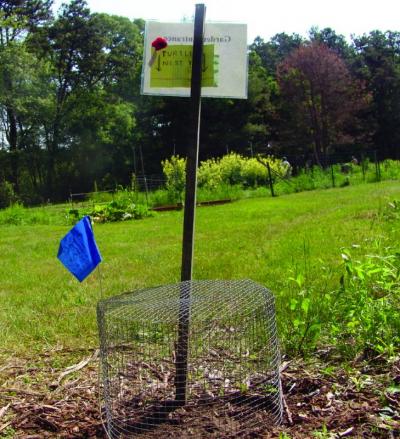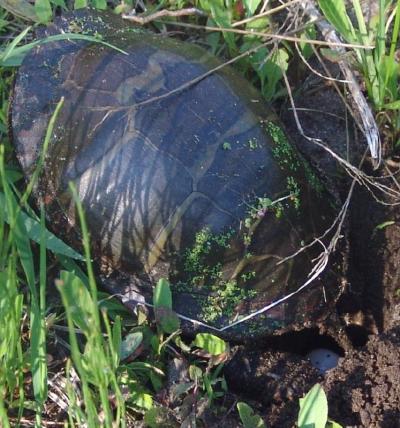A crop of painted turtles
This week, the Wareham Community Gardens celebrated their first crop of an unusual garden specimen. Amidst orderly rows of ripening tomatoes, peppers and cucumbers and sheltered by swirling vines of yellow crookneck squash and pumpkins, three painted turtle nests had incubated under the summer sun for nearly 80 days and, on Sunday, turtle experts Don Lewis and Sue Wieber Nourse decided it was time to check on Wareham's reptile crop.
"[We] removed the cages and carefully hand-excavated the soil to examine the eggs," said Lewis. "No tools can be as sensitive as fingertips in checking nests for fragile turtle eggs."
The result?
"One plump, white egg lay on top of the first nest and bounced on its own when gently stroked, revealing a lively little baby still tucked inside the protective eggshell," Lewis reported. As Lewis stroked his fingertip across the second egg, he said he heard the "telltale rasp as though rubbing sandpaper, a sound that indicates that the egg had been 'pipped,' or pierced, by the hatchling's eggtooth."
Of the 18 eggs deposited by three female painted turtles, two had pipped naturally, one had succumbed to depredation by roots, one had been destroyed by insects, and fourteen more "are waiting their turn to enter the world," said Lewis.
Unfortunately, about a third of the eggs were significantly dehydrated due to this summer's high heat and limited amounts of rainfall. Lewis said that they're now being stored in clean, moist soil to try to restore enough hydration to help them through hatching.
"The plan is to return these babies back to the Wareham Community Garden in a couple of weeks, once all the hatchlings have emerged and have become strong enough to take on the wild world by themselves," Lewis said. "Human partners will have done their bit, and the rest will be up to these 1-inch long, 1/4-ounce powerhouses of Nature."
For the second year, community gardeners witnessed painted turtles scrambling out of the Parker Mills Pond in springtime to nest in vegetable plots. Natural history says that turtles have been laying nests in this spot for centuries, as female turtles return to the site of their own hatching to lay eggs. In the last week of May, three nests were discovered - one in the act of being deposited!- and all three clutches were protected by wire cages to keep the eggs safe from hungry predators.
"For more than 200-million years, turtles crawled and swam through the crevasses of time," Lewis said. "With a little help from their Wareham friends, future generation of turtles will be around to teach humans how it's done."
For more information about turtles and the rhythm of Nature in coastal New England, you can follow the unfolding saga of living natural history at Turtle Journal, www.turtlejournal.com.

















